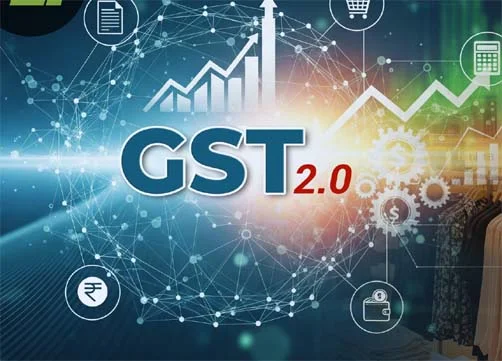Today is a historic day, 22nd Sept. 2025, when India implements GST 2.0. This historic change marks a shift in India’s current four-tier tax system to a largely consolidated 5% and 18% slab system with a 40% slab tax on luxury and sin goods. This system means less time filing taxes, a reduction in compliance costs and ultimately lower prices to most of us – the consumers. Certain essential items like packaged food, certain drugs and personal care items moved to lower tiers of taxation, meaning more affordable prices and more disposable income for consumption and leisure.
As per SBI Research, these reforms are projected to generate a direct consumption uplift of ₹70,000 crore, which, accounting for the multiplier effect, could expand aggregate demand by approximately ₹1.98 lakh crore in a year.
From a sectoral perspective, the benefits/impact we could expect to see would be large for SMEs as they receive significant relief from the previous compliance burden from GST 1.0 as their cash flow improves; we could expect them to increase their competitiveness which will support domestic manufacturing and further formalisation. The consumer segments such as housing, auto, consumer durables, hospitality should see upticks, what with the consumers left with more disposable income. Of course, there may be some tempering of that benefit due to inflationary pressures and/or supply side constraints, but in the near term that direct consumption should see an impact.
GST 2.0 is much more radical than GST 1.0, where continuing to improve the structural complexity was the focus; with GST 2.0, we have a reform agenda to deliberately stimulate consumption and improve upon more inclusive economic growth. Overall, by complementing the fiscal relief measures with the larger Atmanirbhar Bharat and Swadeshi objectives – we are envisioning more economic activity, more production, more consumption and more competitiveness in the global arena, but overall, we are hoping this ultimately leads to a virtuous cycle too.
Nevertheless, challenges remain. The revenue shortfall, estimated at around ₹48,000 crore, could constrain capex and infrastructure investment if not offset by higher economic activity. The effectiveness of the reforms will also depend on state-level cooperation and the willingness of traders to pass on benefits to consumers. Despite these considerations, GST 2.0 represents a strategic step toward a streamlined, consumer-friendly and growth-oriented tax system that strengthens India’s economic resilience while promoting self-reliance and domestic industrial revival.

